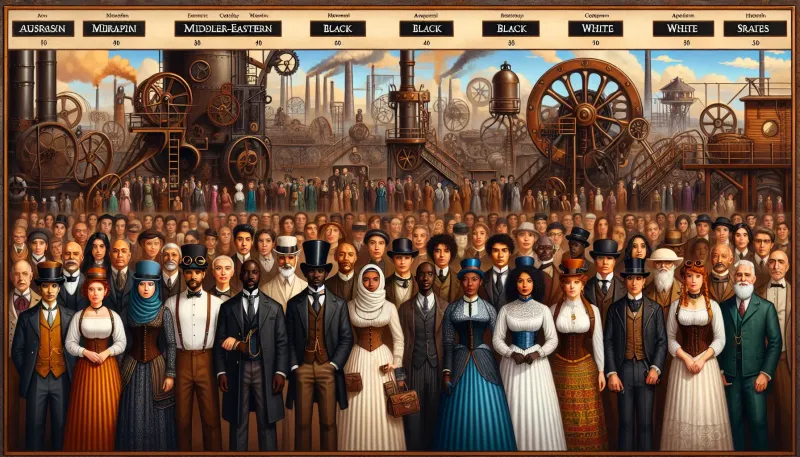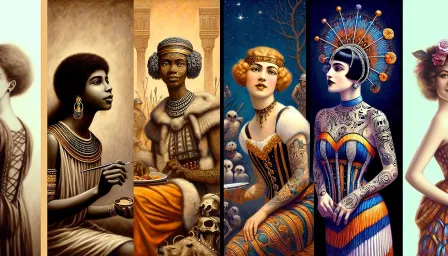Exploring Beauty Standards and Racial Biases: A Comprehensive Analysis

Dive deep into the impact of beauty standards and racial biases on society. This comprehensive analysis offers insights and solutions to promote inclusivity and diversity.
In today’s society, beauty standards play a significant role in influencing perceptions, thoughts, and behaviors. However, the intersection of beauty standards and racial biases has raised crucial questions about inclusivity and equality. This comprehensive analysis delves into how beauty standards are shaped, their relation with racial biases, and what steps can be taken to create a more inclusive society.
The Evolution of Beauty Standards
Beauty standards have evolved significantly over time, influenced by cultural, social, and historical factors. From ancient civilizations to digital influencer culture, the notions of what is considered beautiful have continuously shifted. Traditionally, beauty standards have often been dictated by dominant cultural narratives, often favoring white-centric features.
Understanding Racial Bias in Beauty Standards
Racial bias in beauty standards manifests in the preferential treatment of certain racial features over others. This bias is not only seen in media and fashion industries but also in everyday social interactions. The fetishization of certain racial features and the marginalization of others create a hierarchy that perpetuates inequality and disempowerment.
Media Representation
The media plays a pivotal role in shaping and propagating beauty standards. Historically, media portrayals have favored Eurocentric beauty ideals, often excluding or misrepresenting people of color. Studies show that this lack of representation can lead to lower self-esteem and identity issues among marginalized communities.
Impact on Self-Perception
Racial biases in beauty standards significantly impact self-perception and mental health. Individuals who do not fit the predominant beauty mold often face societal pressure and internalized racism. This can lead to psychological distress, including anxiety and depression, highlighting the need for broader representation and acceptance.
Challenges in Redefining Beauty Standards
Redefining beauty standards to be more inclusive is complex. While there has been progress, with increased representation of diverse beauty in media campaigns and runway shows, several challenges remain. Resistance from established industry players and ingrained societal attitudes hinder the pace of change.
Industry Resistance
The beauty and fashion industries have long been resistant to change, often sticking to tried-and-true norms that guarantee profitability. This conservatism stifles innovative and inclusive representation. Activists and advocates continue to push for reform, challenging these industries to embrace diversity authentically.
Cultural Attitudes
Cultural attitudes are deeply entrenched and slow to change. Societal norms about beauty are passed down through generations and reinforced by media, making the shift towards inclusivity an uphill battle. Education and awareness are crucial in shifting these deeply rooted beliefs.
Striving for Inclusivity: Steps Forward
Building a more inclusive society where beauty standards embrace racial diversity requires concerted efforts from individuals, communities, and industries. The following steps offer a pathway toward equitability:
Promoting Diverse Representation
Media and brands must prioritize and normalize diverse representation. This includes showcasing individuals from various racial and ethnic backgrounds, body types, and ages. Authentic representation can challenge existing stereotypes and create a more equitable standard of beauty.
Education and Advocacy
Educational initiatives that address the history and impact of beauty standards and racial biases are essential. Advocacy groups play a crucial role in campaigning for change and holding industries accountable for their portrayals. Empowering individuals with knowledge can dismantle prejudiced beauty ideals.
Community Support and Empowerment
Communities must support and uplift each other, celebrating different forms of beauty. Creating safe spaces for discussions about beauty and self-worth can foster inclusivity. Empowering people to speak out against exclusionary practices and celebrate uniqueness can drive social change.
Conclusion
The interplay between beauty standards and racial biases is deeply complex and pervasive. However, by understanding the roots and impacts of these biases, society can take steps towards creating more inclusive and equitable beauty ideals. Through active efforts in representation, education, and community support, a future where beauty standards celebrate diversity in all its forms is attainable. It’s a collective responsibility to challenge and redefine these standards, ensuring that every individual feels seen, valued, and beautiful.



























